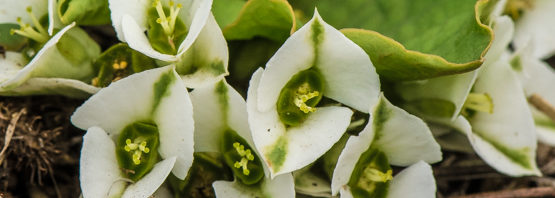At the end of our latest trip to Madagascar, we stayed in Antsirabe, south of the capital Antananarivo. The area is well known for its succulents and I decided to spend an afternoon in the mountains surrounding the town. For several kilometers the road leading out of town ran through the middle of a wide valley, and what I could see of the mountain slopes did not look promising at all. At a certain moment we decide to take a little side road that seemed to take us out of the valley. This was indeed the case, but even the hillsides appeared to be cultivated.
When the driver asked talked some local people if there were any bare rocks nearby, he got a positive reply, but in spite of their directions no rocks came into view. At a loss what to do now, I decided to just stop at an uncultivated spot and look around.
Picture #1 shows the first plant that I noticed there. Without flowers it could be about anything, but next to it was a group of flowering plants (#2) and immediately the penny dropped.
With a large tuber 10-15 cm long and to 7 cm thick, Euph. primulifolia is a true geophyte. It has a very short stem, hidden in the ground, with a radial rosette of 4-12 leaves. In the dry season the plants are leafless and hidden in the grass; in other words, they are only visible in the rainy season. This growth form allows the plants to survive the yearly grass burning.
The leaves are flat or undulate, 8-11 cm long and 3-4 cm wide.
Usually the plants flower before the leaves appear, but as the pictures show, this was not the case here. The cyatophylls* vary from white or greenish to pink and violet.
This variable species is widespread in the central highlands at about 1400-1500 m in a variety of substrates.
* cyatophylls are the bracts that surround the inflorescence proper in many members of the Euphorbiaceae.
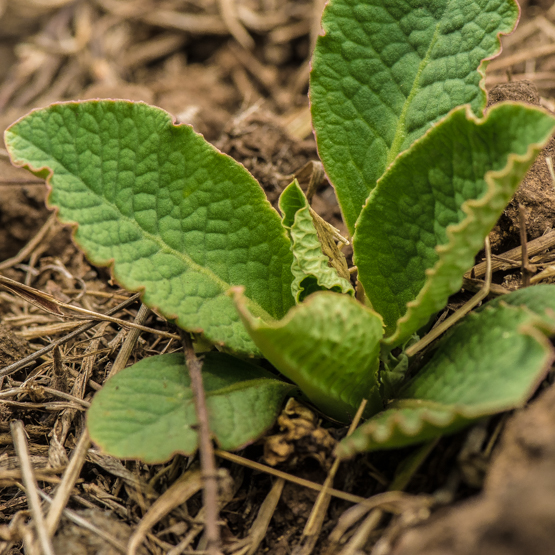


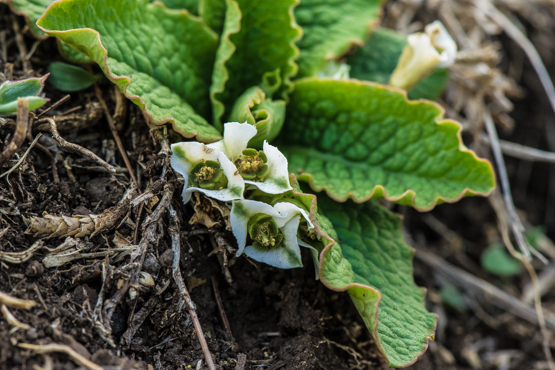
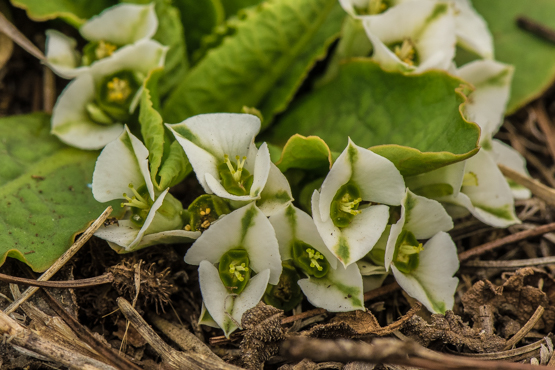

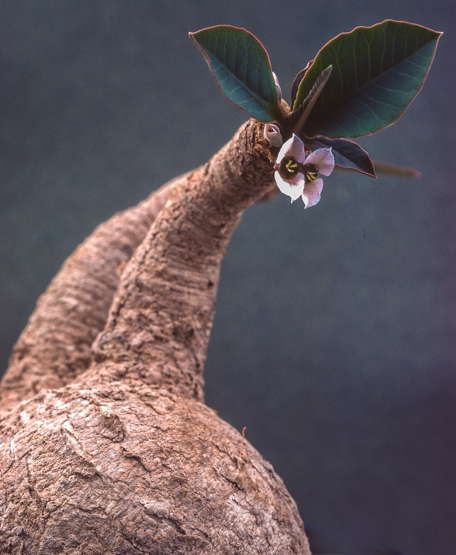
Plant in cultivation. Scanned slide.
